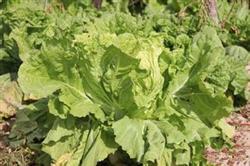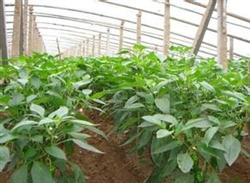The effect of topdressing Chinese cabbage is good according to the growing period.

Chinese cabbage has a high yield and needs a large amount of fertilizer. On the basis of applying sufficient base fertilizer, don't worry about topdressing. Topdressing should be determined according to different growth periods and seedling conditions. There is no topdressing in the seedling stage. If the base fertilizer is insufficient, for the first time, 10 kg of ammonium sulfate per mu can be applied at the stage of 3 to 4 true leaves, sprinkled on both sides of the seedling, and immediately watered, called "seedling fertilizer"; for the second time, 15 kg of ammonium sulfate per mu is applied after seedling setting or seedling transplanting, which is called "hair fertilizer". The third time in the rosette stage, the application of ammonium sulfate 25kg / mu, calcium superphosphate 10kg / mu, fertilizer into the ditch or hole, and then slightly add soil to help ridge, and then watering, called "big topdressing"; the fourth time in the middle of heading, ammonium sulfate 1520kg per mu can be flushed with water, called "heart-filling fertilizer". Chinese cabbage from Tuanzhu to rosette stage, the temperature drops day by day, the weather is mild, can be properly watered during this period, the end of rosette can be properly controlled for a few days, and then watered after the third topdressing. After entering the heading stage, Chinese cabbage needs the most water, so it is necessary to water the squatting seedlings once and then water the second time every 2-3 days. This time is very important. If the soil is dry and cracked, the lateral roots will be broken, the fine roots will die, and the ball will be affected. After that, water is usually watered every 5-6 days to keep the soil moist.
- Prev

Technical measures for Disease Control of Chinese Cabbage
Downy mildew, virus disease, soft rot and dry burning heart disease are the main diseases of Chinese cabbage. The main results are as follows: 1. Downy mildew can occur from seedling stage to pericardial stage, mainly harming Chinese cabbage leaves. At first, the disease begins from the lower leaves, producing water-immersed, yellowish polyhedral spots on the leaves, and gradually enlarged and turned into yellowish brown.
- Next

Four cultivation models based on spring radish and pepper
Pepper in winter and spring is the most important crop in the cultivation of pepper in solar greenhouse at present. It is generally planted in mid-November and can be harvested and listed in the first ten days of January of the following year until the summer of the following year. The main cultivation techniques are explained as follows: 1. The construction of a new type of energy-saving solar greenhouse, to the structure and ring of the original solar greenhouse.
Related
- Where is it suitable to grow horseradish in China? it is expected to see the middle altitude horseradish in Alishan.
- How to prevent tomato virus disease reasonably? (Control methods included)
- Many people like to plant towel gourd on the balcony. What are the main points of this method and management?
- What crops can chili peppers be mixed with?
- Fertilization techniques and matters needing attention in Tomato
- What are the grafting techniques for peach seedlings in spring?
- Harm and control methods of root swelling disease of Chinese cabbage
- What are the pests of sweet potatoes? How to prevent and cure it?
- Symptoms, causes and Control methods of navel Rot in Tomato
- The cause of "Cucumber rotten bibcock" in Farmers' planting Cucumber and its Control Plan

